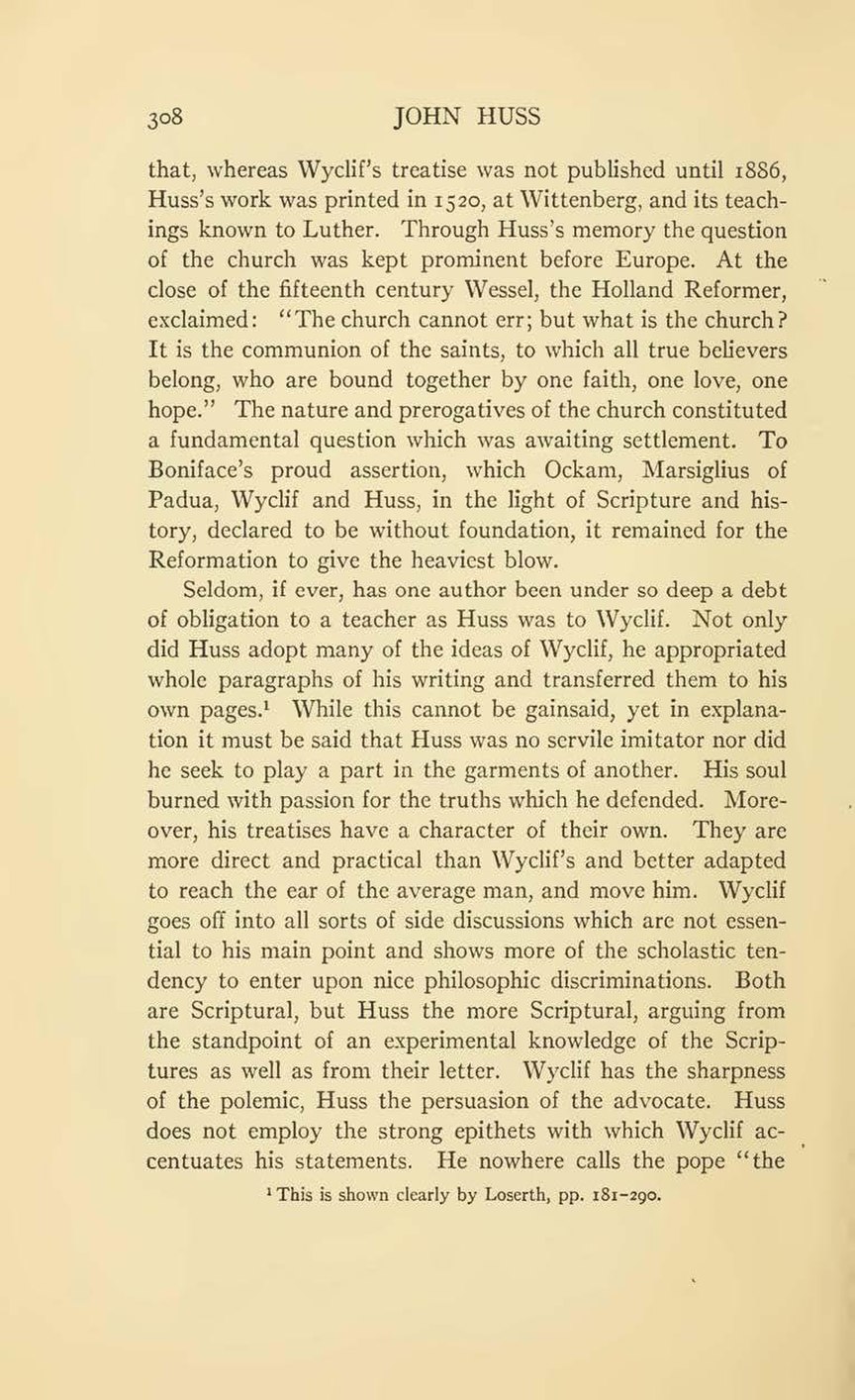that, whereas Wyclif’s treatise was not published until 1886, Huss’s work was printed in 1520, at Wittenberg, and its teachings known to Luther. Through Huss’s memory the question of the church was kept prominent before Europe. At the close of the fifteenth century Wessel, the Holland Reformer, exclaimed: “The church cannot err; but what is the church? It is the communion of the saints, to which all true believers belong, who are bound together by one faith, one love, one hope.” The nature and prerogatives of the church constituted a fundamental question which was awaiting settlement. To Boniface’s proud assertion, which Ockam, Marsiglius of Padua, Wyclif and Huss, in the light of Scripture and history, declared to be without foundation, it remained for the Reformation to give the heaviest blow.
Seldom, if ever, has one author been under so deep a debt of obligation to a teacher as Huss was to Wyclif. Not only did Huss adopt many of the ideas of Wyclif, he appropriated whole paragraphs of his writing and transferred them to his own pages.[1] While this cannot be gainsaid, yet in explanation it must be said that Huss was no servile imitator nor did he seek to play a part in the garments of another. His soul burned with passion for the truths which he defended. Moreover, his treatises have a character of their own. They are more direct and practical than Wyclif’s and better adapted to reach the ear of the average man, and move him. Wyclif goes off into all sorts of side discussions which are not essential to his main point and shows more of the scholastic tendency to enter upon nice philosophic discriminations. Both are Scriptural, but Huss the more Scriptural, arguing from the standpoint of an experimental knowledge of the Scriptures as well as from their letter. Wyclif has the sharpness of the polemic, Huss the persuasion of the advocate. Huss does not employ the strong epithets with which Wyclif accentuates his statements. He nowhere calls the pope “the
- ↑ This is shown clearly by Loserth, pp. 181–290.
